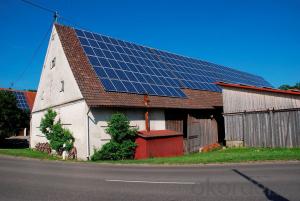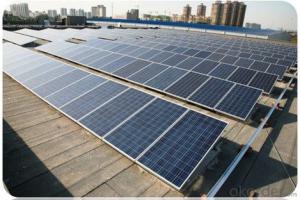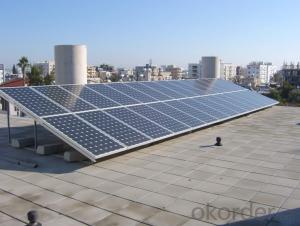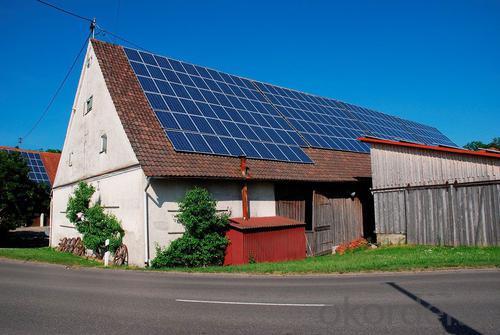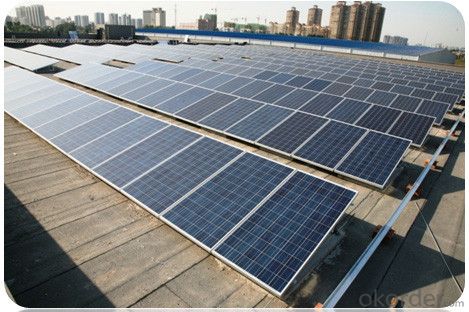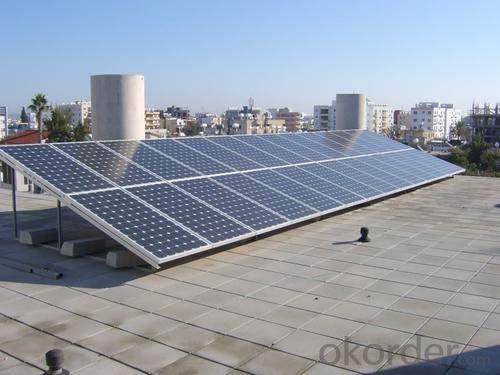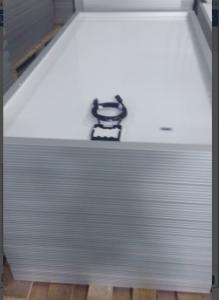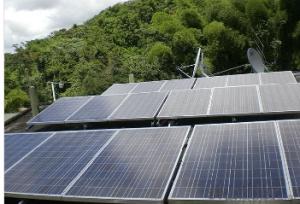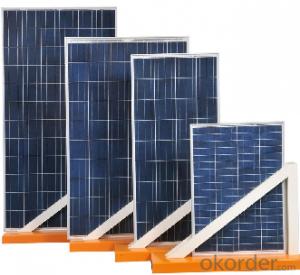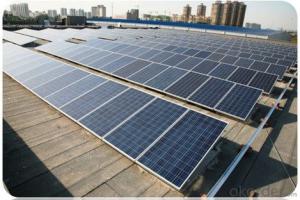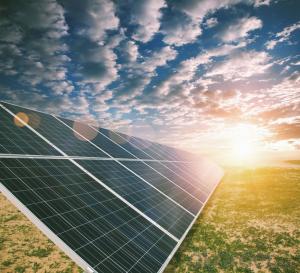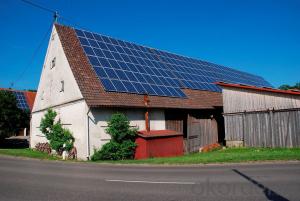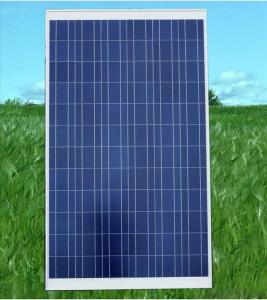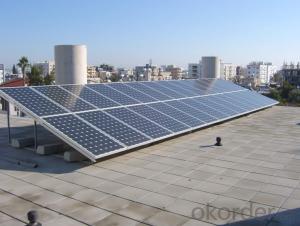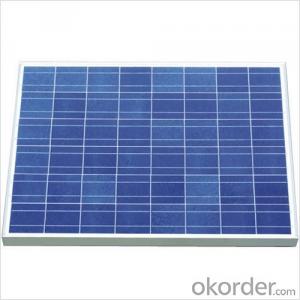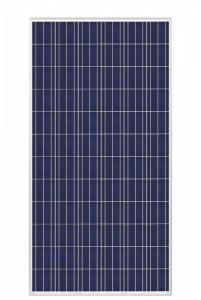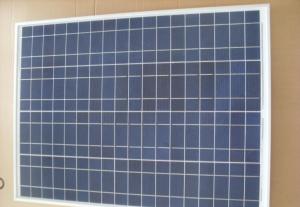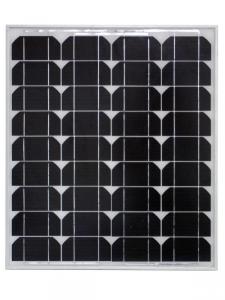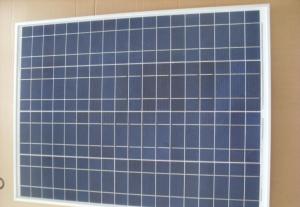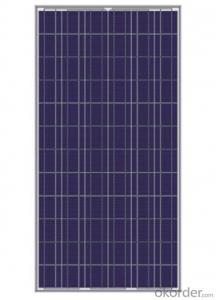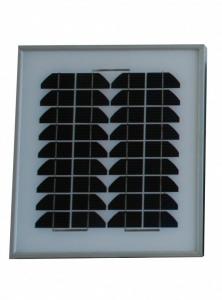245w Polycrystalline Silicon Solar Panels for Garage Installation
- Loading Port:
- Guangzhou
- Payment Terms:
- TT OR LC
- Min Order Qty:
- 200000 watt
- Supply Capability:
- 20000000 watt/month
OKorder Service Pledge
OKorder Financial Service
You Might Also Like
Solar cell module production process
Line called packaging line components, packaging is the production of solar cells a key step in the packaging process without a good, multi-well battery is also not a good component of production boards. Battery package not only the battery life is guaranteed, but also to enhance the combat strength of the battery. Product quality and high service life is to win can be the key to customer satisfaction, so the quality of components of the package board is very important.
Process is as follows:
1, the battery test
2, positive Welding - Inspection –
3, on the back of cascading - Inspection –
4, laying (glass cleaning, material cutting, glass pre-processing, laying) –
5, laminating –
6, to flash ( to the side, cleaning) –
7, fitted border (glue, loading angle keys, punching, install box, scrub I glue) –
8, the welding junction box –
9, high-pressure test –
10, component testing -- -
11 appearance inspection, packaging and storage;
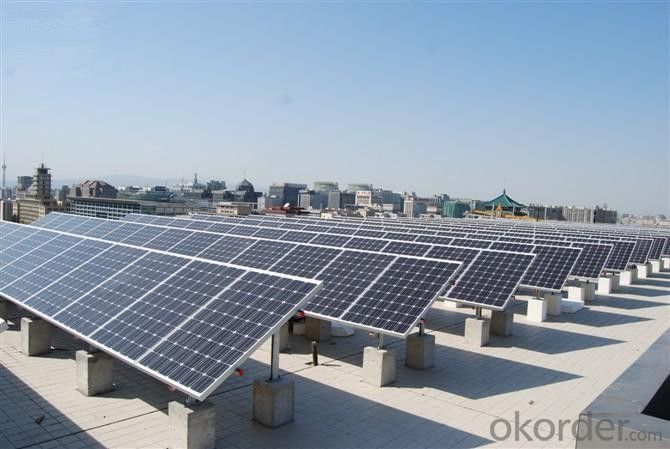
Data sheet
Maximum Power | 250W |
Efficiency | 0.154 |
Backsheet | White |
Frame Colar | Silver |
Manufacture Site | China |
Frame | Anodized Aluminum Alloy |
Weight | 19 kg |
- Q: Are there any government incentives or tax credits for installing solar panels?
- Yes, there are indeed government incentives and tax credits available for installing solar panels. These incentives and credits vary by country and even by state within a country. Many governments offer tax credits, grants, or rebates to promote the adoption of solar energy. Additionally, some countries have implemented feed-in tariffs, which allow solar panel owners to sell excess electricity back to the grid at a premium rate. It is advisable to check with local authorities or consult a professional to understand the specific incentives and tax credits available in your area.
- Q: Science homework! I need to explain how a solar panel works and draw a Sankey Diagram for the solar panel, can anyone show me a sankey diagram for a solar panel or explain how a solar panel works?? ILL GIVE U BEST ANSWER IF U HELP WITH BOTH =]
- There okorder /
- Q: I mean like bread is made of wheat, what are solar panels made up of?How are they manufactured?
- Solar panels (aka photovoltaic panel) are most often made up of thin wafers of crystalline silicon or cadmium telluride. As photons from the sun enter the photovoltaic cell, electrons are freed from the substrate when are then collected by wires that run throughout the panel. And as we know electrons=electricity!
- Q: im aware i dont fully understand. but with what i do. if P = iv, and current changes with voltage, whats the point of changing either. if in any cicumstance, you end up with the same wattage, how does changing either effect a solar setup. (2v panel vs 24v)thanks in advance. explain in laymans if you can.
- The choice of solar panel voltage comes down more to what the panels will be connected to. You're right that power can remain the same at the different voltages. Higher input (panel) voltages are sometimes used in inverter systems to reduce the effect of voltage draw-down. 2v panels (about 20v open circuit) work well for charging 2v batteries, connected in parallel, through a charge controller. For use of a grid-tie inverter, higher input voltages are sometimes used to reduce the effects of draw-down. You want to select and wire (parallel vs. series) your panels based on the input voltage requirement of the load, whatever it may be.
- Q: I am seriously thinking about installing PhotoVoltais Solar panels (that generate electricity) on my roof. Besides the usual (cost, ROI, etc.), I was researching for the maintenance of these panels. We have tall trees around the house and needles and leaves fall on our roof all the time... not to mention the dirt and grime that collects over time.Do these decrease the capacity of the panels? Do the panels require a regular maintenance?Thanks!
- I don't know if the guy is right about cells burning out if they are covered. You should look on the Internet for insolation tables for your area to see the effective hours of sunlight. Then guesstimate the percentage of time the panels will be shaded. Those trees may make the solar thing a poor idea. He is right about the trees reducing you efficiency. If a panel is shaded about 0 percent, its output drops to close to zero. My panels are five years old, and I have washed them twice. There as been no noticeable dropoff in output.
- Q: I was hearing that we need silver as a medal for the creation of solar panels, is this true? How much silver would be needed to make one solar panel? (if this is true)
- Some research has shown that small amounts of silver can improve the efficiency of solar panels. But this appears to be in the research stage and applies to the the thin film solar cells. Some solar panels makes use silver as the wiring in kind of a screen printing process, but you don't need to use silver, you can use copper or aluminum using different techniques instead. Generally the metal used is in small amounts and not a majority of the cost of the solar panel.
- Q: What is the impact of dust and dirt on solar panels' efficiency?
- Dust and dirt on solar panels can significantly reduce their efficiency. When dust accumulates on the surface of the panels, it blocks sunlight from reaching the photovoltaic cells, thereby reducing the amount of electricity generated. The accumulation of dirt can create a barrier that hinders the panels' ability to absorb sunlight effectively. Regular cleaning and maintenance of solar panels are crucial to ensure optimal efficiency and maximize energy production.
- Q: 260 watt solar panels on an rv?
- There are many other controllers, you just need to get a sense for the limitations and make sure you are working within them. Controllers are not that hard to hook up, two connections simply go to the battery, plus and minus. Then the other two go to your panel. I like to put a switch at the panel output, leave it off while you are hooking up the panel side wiring of the controller, then when you are sure everything is connected properly, and you have some kind of battery power indicatioon at the controller, throw on the panel switch and see if it is charging. Remember that a panel is a power source, and connecting it to the controller while it is in the sun is like hooking up a car headlight while the lights are turned on. Another option is to wrap the panel in a blanket and put it in the shade while you are connecting it up. Your panel has a max amp rating, Imax, which will likely be around 5 or 6 amps at that voltage and wattage. Number 4 romex will work for that, as well as medium duty AC extension cord wire, if your run is less than 30 feet or so. Take care Steven, Rudydoo
- Q: All I ever heard is how easy it is to get solar panels for a persons home. I live in Arkansas and to do my house it would cost 25000 that I dont have and No state incentives. So where do I go and get these free solar panels? Thanks for the help
- Sorry this is so long. I live in north west arkansas. I have solar on my home. I installed them myself. Did not cost me anywhere near 25 grand. Solar will pay you back if you get incentives or not. I have said this a hundred times but people just don't seem to understand or can't do the math. You are renting from the public utility. You have nothing in the end but a stack of payment stubs. There is no way to get a return on your investment. You paid them money and have nothing. Nothing at all .. Well maybe good service. But still nothing. If you check it out most solar electric systems last 30 years or longer. If your electric bill is 00 dollars a month. do the math. 00 dollars a month for 30 years is $36,000 dollars you would normally pay the public utility. So why not buy your $25,000 system, you just made $0,000 right there on the spot. Now add in 3.5% cost of living per year for each year for the next 30 years on that 35,000 you pay the public utility. Then you have to keep in mind you do not pay taxes on any electric you make yourself. You do not pay fees on your own power. You do not pay the cost of fuel incresses every time the price of oil goes up. In the end you saved $00,000. So it is free even if Arkansas don't give free handouts like other states. I even know people who say they are waiting for some one to make a cheaper solar module. That will not happen because even if they make it for half the cost (like evergreen is doing) it will still be sold at standard market value not production cost. The real problem with solar is it is hard to come up with the upfront cost. But renting solar panels is comming but that is the same as just renting power from the public utility. I wish you luck but it will be a while before Arkansas will make any moves on renewables. They just in 2007 made it law that the public utilities have to let your roll your net metering over to the next month if you over produced.
- Q: The intensity of sunlight at the distance of the Earth's orbit is 380 W/m2. An Earth-orbiting satellite has a solar panel that measures .35 m by 4.86 m, which converts solar energy to electrical energy with an efficiency of 26%. In one hour, how much electrical energy does the panel produce? Assume that the satellite's attitude control jets keep the panel oriented perpendicular to the incoming sunlight.
- 380 W/m2. An Earth-orbiting satellite has a solar panel that measures .35 m by 4.86 m, which converts solar energy to electrical energy with an efficiency of 26%. In one hour, how much electrical energy does the panel produce? 380 W/m? x .35 m x 4.86 m x 0.26 = 2354 watts energy is watts*time E = 2354 watts x 3600 sec = 847472 Joules or, E = 2354 watt-hours
Send your message to us
245w Polycrystalline Silicon Solar Panels for Garage Installation
- Loading Port:
- Guangzhou
- Payment Terms:
- TT OR LC
- Min Order Qty:
- 200000 watt
- Supply Capability:
- 20000000 watt/month
OKorder Service Pledge
OKorder Financial Service
Similar products
Hot products
Hot Searches
Related keywords
